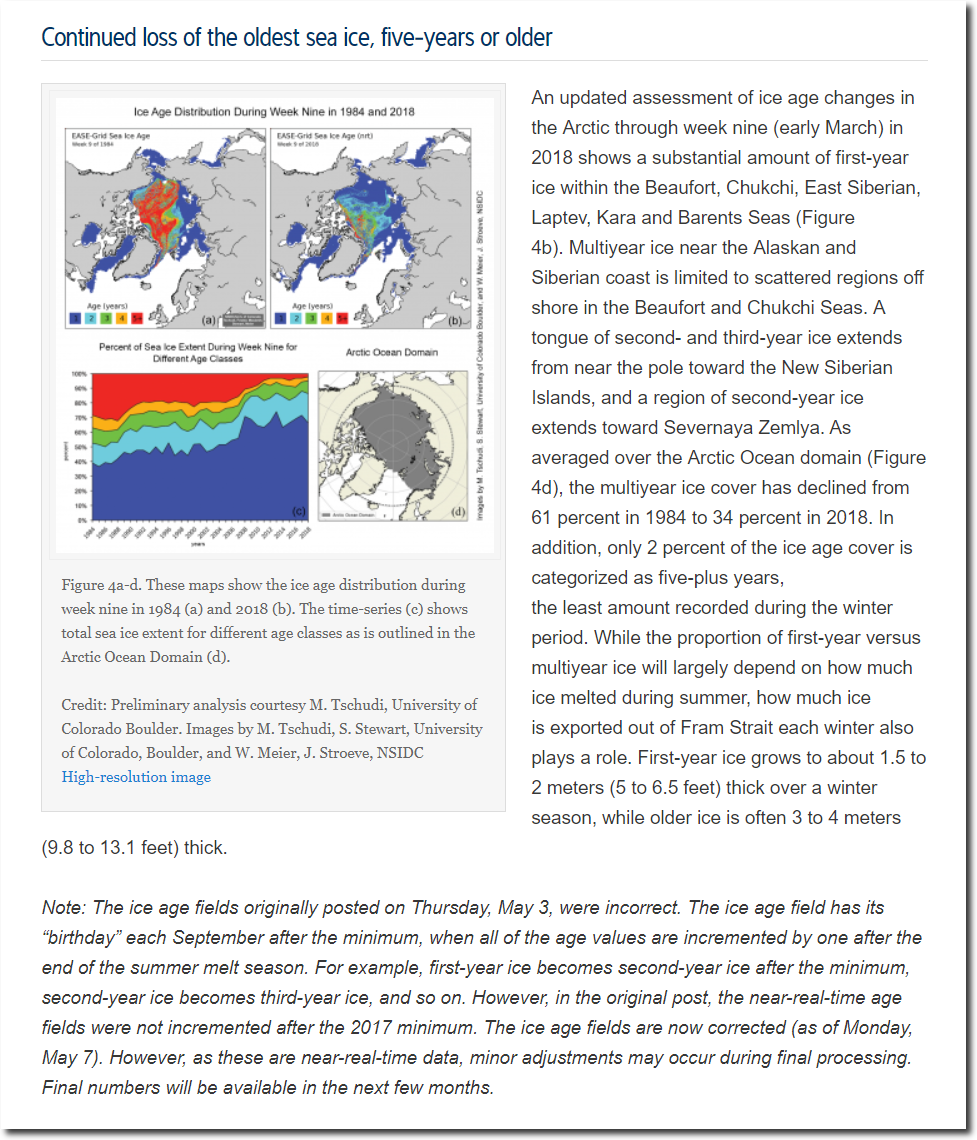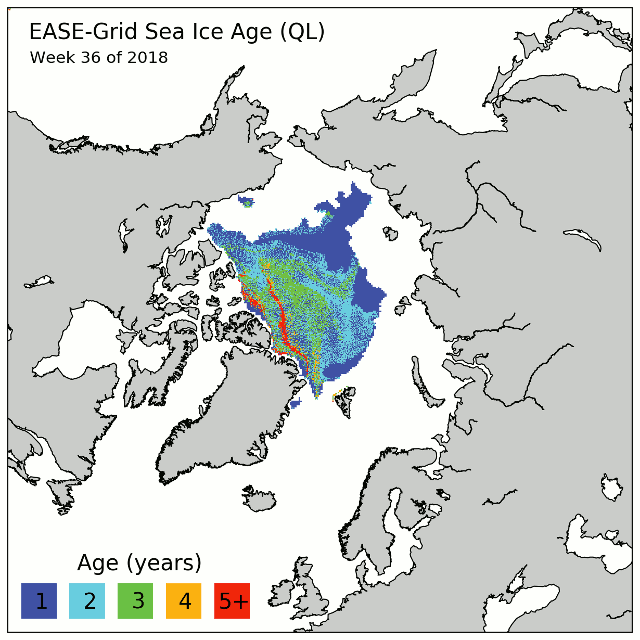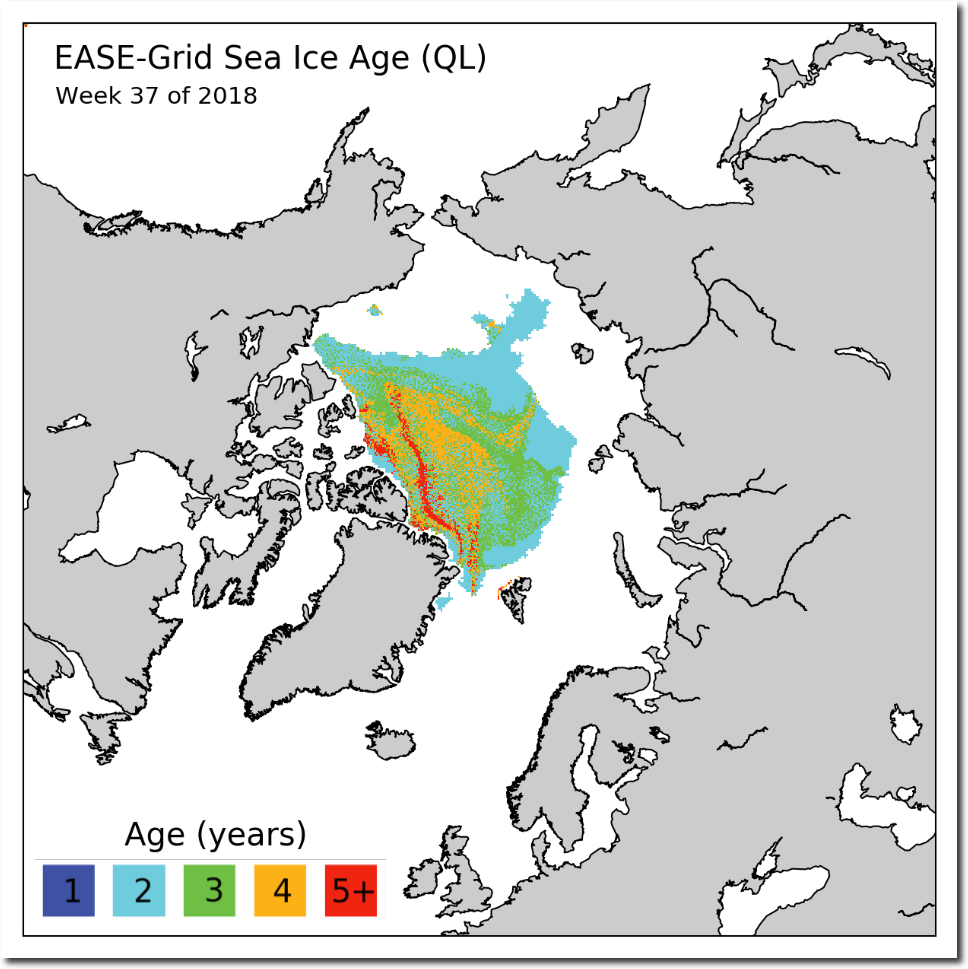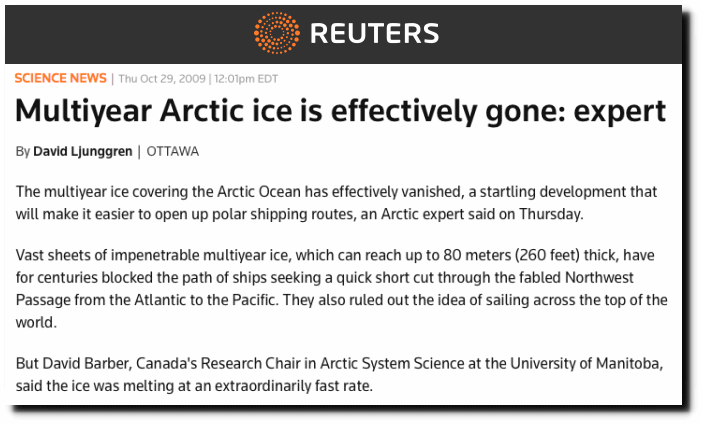In their ongoing efforts to misinform the public about the non-demise of Arctic sea ice, NSIDC “forgot” to advance the age of the ice in week 37 last year – until they got called out on it.
Note: The ice age fields originally posted on Thursday, May 3, were incorrect. The ice age field has its “birthday” each September after the minimum, when all of the age values are incremented by one after the end of the summer melt season. For example, first-year ice becomes second-year ice after the minimum, second-year ice becomes third-year ice, and so on. However, in the original post, the near-real-time age fields were not incremented after the 2017 minimum.
Arctic winter warms up to a low summer ice season | Arctic Sea Ice News and Analysis
The animation below shows how they normally add one year on to the age of the ice in week 37.
Index of /pub/DATASETS/nsidc0611_seaice_age_v3/browse/2009
They are doing the exact same cheating again this year, forgetting about the ice’s birthday in week 37. There should have been a large change in the colors of the map in week 37.
Index of /pub/tschudi/iceage/images/
I fixed it for them in the image below. This is what week 37 should look like. Note that one year from now, there will be lots of red five year old ice.
Nine years after experts announced the disappearance of multi-year ice, there is lots of multi-year ice in the Arctic.







